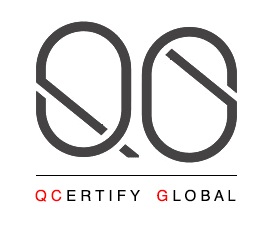Financial Sector Compliance: Navigating ISO 22301 for Business Continuity
Ensuring Resilience in Financial Institutions
Introduction
In today’s volatile economic landscape, the financial sector faces myriad challenges that necessitate robust business continuity strategies. ISO 22301, the international standard for business continuity management systems (BCMS), provides a comprehensive framework for organizations to prepare for, respond to, and recover from disruptive incidents.
For financial institutions, compliance with ISO 22301 is not just a regulatory requirement but a critical component of operational resilience. This blog explores the significance of ISO 22301 in the financial sector and offers insights on navigating its requirements to ensure uninterrupted business operations.
Understanding ISO 22301
ISO 22301 is designed to protect organizations from a wide range of potential threats, including natural disasters, cyber-attacks, and supply chain disruptions. The standard outlines a systematic approach to establishing, implementing, maintaining, and continually improving a BCMS. Key elements of ISO 22301 include:
- Business Impact Analysis (BIA): Identifying and evaluating the impact of potential disruptions on critical business functions.
- Risk Assessment: Analyzing the likelihood and consequences of various threats to determine the level of risk.
- Business Continuity Strategy: Developing strategies to mitigate identified risks and ensure the continuity of essential operations.
- Incident Response: Establishing procedures for effective response to incidents, minimizing impact, and ensuring timely recovery.
- Monitoring and Review: Continuously monitoring and reviewing the BCMS to ensure its effectiveness and relevance.
Why ISO 22301 is Crucial for the Financial Sector
The financial sector is particularly vulnerable to disruptions due to its interconnectedness and reliance on technology. Compliance with ISO 22301 offers several benefits for financial institutions:
- Regulatory Compliance: Adhering to ISO 22301 helps financial institutions meet regulatory requirements and demonstrate their commitment to operational resilience.
- Enhanced Reputation: Implementing a robust BCMS enhances customer trust and confidence, showcasing the institution’s dedication to maintaining continuity.
- Risk Management: ISO 22301 provides a structured approach to identifying and mitigating risks, reducing the likelihood of disruptions and their impact.
- Operational Efficiency: A well-designed BCMS streamlines processes and ensures that critical functions can continue without significant interruptions.
Steps to Achieve ISO 22301 Compliance
Navigating ISO 22301 compliance involves a series of structured steps. Here is a detailed roadmap for financial institutions to achieve certification:
1. Leadership Commitment
Obtaining top management support is crucial for the successful implementation of ISO 22301. Leaders must demonstrate their commitment to business continuity by allocating resources, defining roles, and fostering a culture of resilience.
2. Business Impact Analysis (BIA)
Conducting a comprehensive BIA is the foundation of an effective BCMS. Identify and prioritize critical business functions, assess the potential impact of disruptions, and determine recovery time objectives (RTOs) and recovery point objectives (RPOs).
3. Risk Assessment
Perform a thorough risk assessment to identify potential threats and vulnerabilities. Evaluate the likelihood and impact of each risk, and develop mitigation strategies to address identified gaps.
4. Business Continuity Strategy
Develop a business continuity strategy that outlines the steps to be taken in the event of a disruption. This includes identifying alternative work locations, establishing communication plans, and ensuring access to essential resources.
5. Developing the BCMS
Document the BCMS, including policies, procedures, and guidelines. Ensure that the documentation is clear, concise, and accessible to all relevant stakeholders.
6. Training and Awareness
Provide comprehensive training to employees on their roles and responsibilities within the BCMS. Conduct regular awareness programs to ensure that all staff members are familiar with the procedures and protocols.
7. Testing and Exercising
Regularly test and exercise the BCMS to evaluate its effectiveness. Conduct drills, simulations, and tabletop exercises to identify areas for improvement and ensure readiness.
8. Monitoring and Review
Continuously monitor and review the BCMS to ensure its ongoing effectiveness. Conduct internal audits, management reviews, and post-incident evaluations to identify opportunities for enhancement.
9. Certification Process
Engage with a certified body to conduct an external audit of the BCMS. Address any non-conformities identified during the audit and obtain ISO 22301 certification.
Conclusion
Achieving ISO 22301 compliance is a strategic imperative for financial institutions aiming to enhance their resilience and ensure business continuity. By adopting this internationally recognized standard, financial organizations can mitigate risks, maintain regulatory compliance, and safeguard their reputation.
Partnering with a trusted consultancy like QCertify Global can streamline the ISO 22301 implementation process, providing expert guidance and support at every stage.
For more insights and guidance on ISO 22301 and other quality management practices, visit QCertify Global’s website and subscribe to our newsletter. Stay ahead in the competitive financial landscape by embracing comprehensive business continuity and compliance strategies today.
Engage with a certified body to conduct an external audit of the BCMS. Address any non-conformities identified during the audit and obtain ISO 22301 certification.




